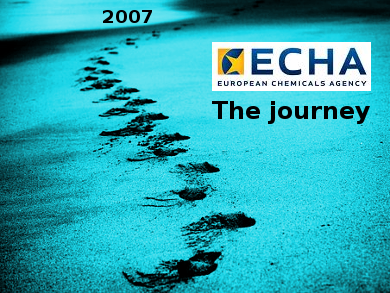On May 31, 2018, the third and final registration deadline has been completed. This marks the beginning of one uniform regulatory system for all chemicals on the EU/EEA market.
In 2007, the European Parliament and the Member States adopted the REACH Regulation based on the ‘no data, no market’ condition. This means the chemicals industry has to describe the impact on human health and the environment of the chemicals they make, and they have to manage the risks. They have to submit the proof that chemicals can be used safely to ECHA in registration dossiers documenting the chemicals’ properties, uses, and conditions for safe use. Information on how to use chemicals safely should also be communicated to the users in the supply chain.
Long Journey of Collecting Information
The chemicals manufactured or imported in high volumes (> 1 000 tonnes per year) were to be registered by 2010. ECHA received 33,462 registration dossiers from 6,489 companies for 8,893 substances manufactured or imported in 2010. The chemicals manufactured or imported in the middle volumes (100 to 1 000 tonnes per year) were to be registered by 2013. ECHA received 48,402 registration dossiers from 9,243 companies for 12,706 substances manufactured or imported in 2013. The chemicals manufactured or imported in small-volumes (1 to 100 tonnes per year) were to be registered by 31 May 2018. ECHA received 88,300 registration dossiers from 13,045 companies for 21,551 substances manufactured or imported to date. Registrations are still coming, in according to the agency.
From the EU/EEA, most registrations come from Germany (25 %), the UK (14 %), France (10 %), The Netherlands (9 %), and Italy (8 %). The top five non-EU countries are USA (27 %), China (15 %), Japan (14 %), India (12 %), and Switzerland (6 %).
What’s been Achieved
ECHA publishes the non-confidential data on its website to make them accessible to ensure the safe use of chemicals. Today, the agency has the largest database on chemical properties worldwide. Relatively simple summaries, called info cards, inform consumers about the hazards of each chemical and how to use them safely. In brief profiles, some 15 pages long, professionals can find the effects of chemicals on human health and the environment. Connected to this database is also the Chemicals in our life website. It is available in 23 EU languages and provides information on the benefits and risks of using chemicals and explains the EU legislation on chemicals for the general public.
Not only Europe benefits from the knowledge collected under REACH. The EU has become a global role model for chemicals safety. Legislators outside of Europe are inspired by REACH and benefit from the data that is publicly available. Examples include KOREA or K-REACH, the Taiwanese Toxic Chemical Substances Control Act (TCSCA), and the Canadian.
Before the start of REACH, ECHA projected the number of chemicals registered to be 30,000. The lower than anticipated number may be due to changes in European production since the forecasts which were done 15 years ago. The number of substances registered is similar to those in the US market. However, it also remains to be seen if there will be seen an impact of unregistered products on supply chains and how substantial this impact will be.
And Now?
Following the last REACH registration deadline, companies need to keep the information on their chemicals up to date, this means chemicals and product changes have to be reported, and companies need to register new chemicals.
ECHA now has to confirm the dossiers and conclude completeness checked by August 31. A big enforcement project on authorisation and registration duties is planned for 2019.
In the longer run, ECHA wants to improve the interlinkages with other legislation, to create synergies with other legislation, reduce barriers which hinder cooperation, and to achieve consistency. They want to be a source of advice and knowledge on chemicals and get closer to the EU citizens.
- European Chemicals Agency (ECHA), Helsinki, Finland




